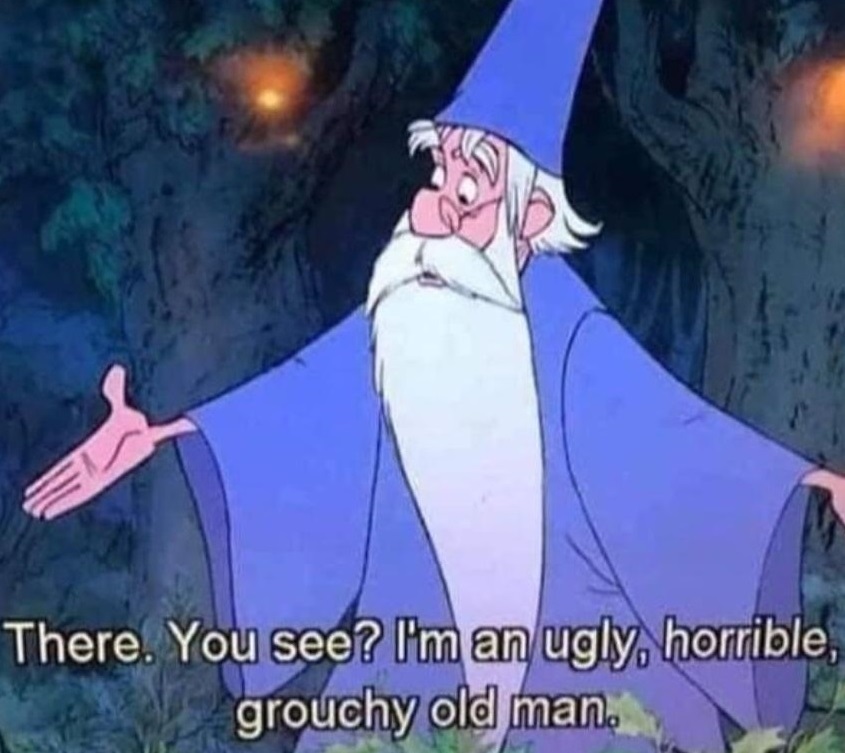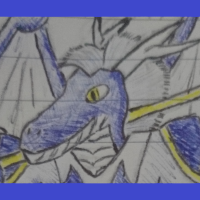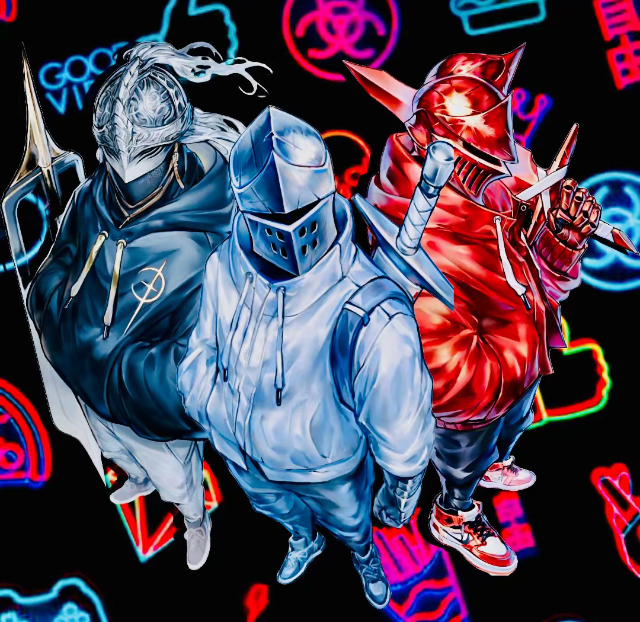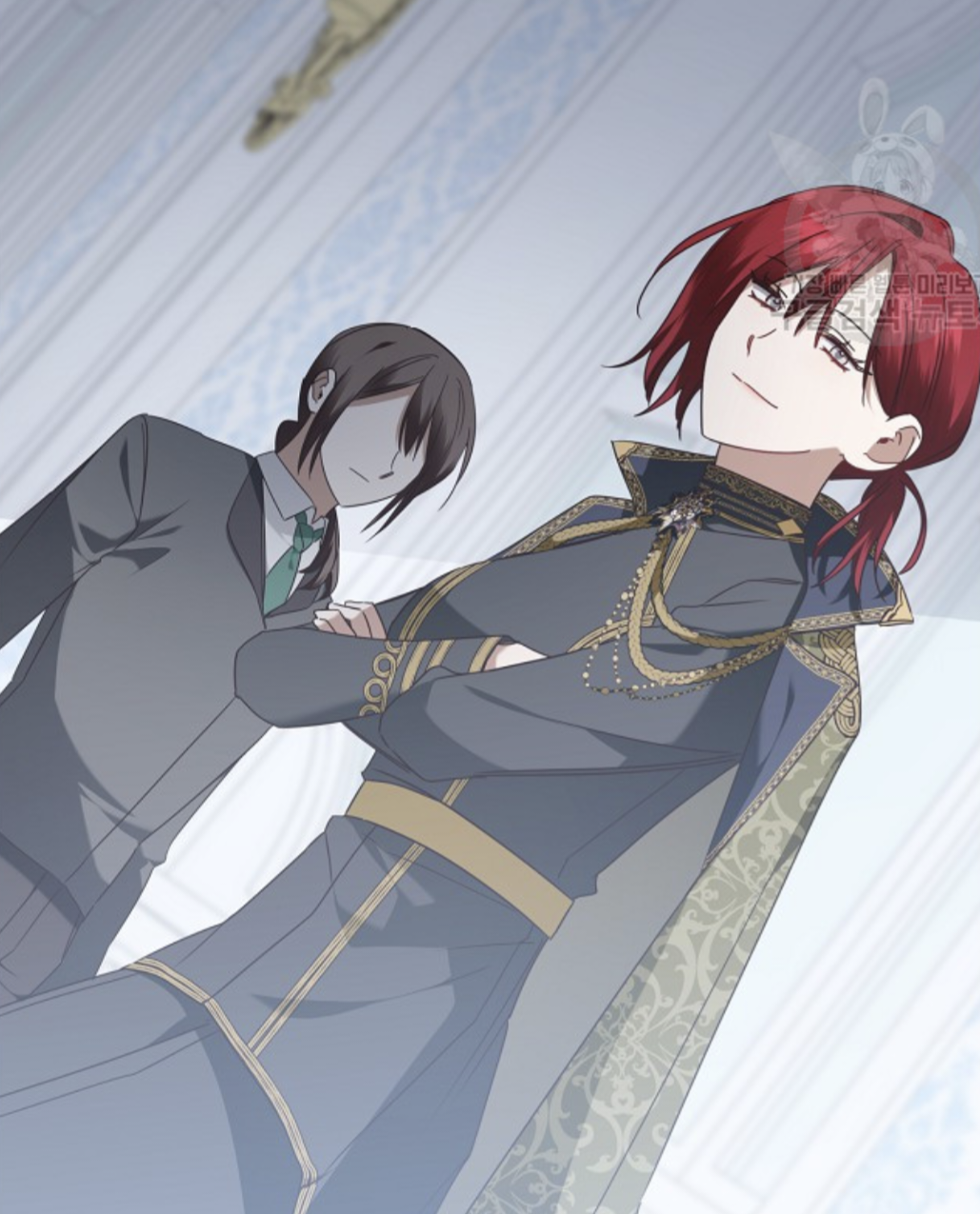Every time people lament changes to the lore that amount to “not every member of species X is irredeemably evil” and claim the game is removing villains from it, I think how villains of so-caleld evil species fall into two cathegories: a) bland and boring and b)have something else, unrelated to their species going on for them, that makes them interesting.
Evil races give someone the PCs don’t have to feel bad about killing. Obviously depends on your party, but if they befriend the hungry wolf pack and negotiate with the bandits, then a band of definitely evil goblins gives the barbarian something to smash without worrying if they’re killing little Timmy’s dad.
Edited to add: And if “he’s an evil race” is your only reason for them being a major villain, that’s bad storytelling. About as bad as “yes they’re going to help you because they’re good,” and not for some kind of benefit to them, monetary or spiritual or whatever.
Eh, but maybe the barbarian should have to think about whether smash is the right path forward?
Also, you can have an individual group of enemies who are very clearly definitely evil without needing to relegate an entire species to it.
That said I run campaigns which are pretty far removed from my players wanting to smash dudes without a second thought.
Except the bard, right?
Ayyyyy
Everybody loves zombies - Shane Lacy Hensley
Your players care about race when murdering people. If you want to murder people then just do it.
Also that’s what we have Nazi metaphor’s for
Szass Tam, Sauron, SecCom, The Empire, etc.
No quarrel there. The only interesting thing about evil races is when you subvert the trope, but as we’ve all been doing that since the 80s that’s just become another tired trope.
Personally I just run campaigns where 90% of the people are humans.
90% of the people are humans
I go with a setting where humans don’t exist at all. The closest is Elves, and picking them comes with a whole host of implications, like needing twice as much food to survive and everyone assuming you’re mega rich.
I feel like:
- No race should have alignment locking in any direction, because people are people and can do whatever they want. Our goodness or badness isn’t determined by our genes.
- But, people are who they are because of the society they grow up in and how people treat them. If humans treat goblins like shit because they’re goblins, and a goblin turns into a big bad because they want to kill the humans that slaughtered their village, then that villain is interesting for reasons tied to their species.
“No villain in D&D is interesting for reasons tied to their species” sounds very dangerously close to “I’m race-blind” in terms of not acknowledging that different people have different struggles, and racism is often a huge part of those struggles.
If you like this idea, you should read the webcomic The Order of the Stick. It’s surprisingly good for a comic that started out as DND jokes and stick figures. It deals a lot with the problem of evil in DND.
Likewise, Goblins.
Your number 2 is based around cultural, not species differences. Two humans raised in two different cultures could end up very different.
There could be two tribes of goblins. One that began eating people out of desperation and now just do it because it’s tradition. The other could have grown up in close relationships with their nongoblin neighbors and are seen as a valuable part of their region.
So untying evilness to their race isn’t being race blind or pretending people down have struggles - it’s removing the shoehorning that occurred.
Big cats have hunting instincts that are hard to turn off even if they like you (see: any news story of a big cat eating their owner), humans have instincts relating to forming communities. every single species has some instincts they follow and they aren’t the same as ours, they’ll deeply shape how a species’ cultures/morals/etc develop. Just saying goblins are little green humans is deeply boring and hurts world building.
I feel like the bigger reason to have evil races is to have a more or less ever present challenge and point of conflict. For instance, the underdark is horrible place to be, in large part due to the drow. Their presence and general alignment of evil makes the setting dangerous and interesting. Is this town safe? Have the drow been messing about assassinating local leaders? Should we help this group by liberating them from slavery from the drow?
It’s almost like their species is in of itself a character, with this species sized character being evil. Having an entire species be generally evil gives the world more scale than a single evil character would. But yes, an individual villain needs more than just their evil race to be interesting.
But the reason the drow are evil is primarily because of the Spider god Lolth, not because they’re Drow. Drow free from Lolth aren’t necessarily evil.
Absolutely. But I wasn’t talking about the lore reason why they’re generally evil.
Drow freed from Lolth, in isolation of another way being convincingly presented to - likely forced on - them, have had how many thousands of years of abusive culture hammered & manipulated into them. More likely than not they’ll still develop an evil culture, though the structure of their society would likely shift due to power gaps. Given how they work either a single powerful demagogue or some sort of council system of the great houses.
Drow even under Lolth aren’t necessarily evil but she set them up for biological rewards for evil whenever she can (there’s little detail on this but I think that’s concept’s the source of the terrible “mother’s ecstasy at womb murders” thing - good idea, bad example/implementation), on top of enforcing an ongoing culture of brutality and wickedness. Its how most of the evil deities still allow for Free-will to empower their Faith. They combine physiological reward hijacking, adding aspects that encourage easier exclusion from others (isolation is good for limiting options), and rigorous and brutal cultural and societal reinforcement. It doesn’t prevent good, but it gives far higher hurdles for an evil race to overcome.
Can confirm, I run a LOT of dragons and the interesting dragon villains are generally about finding unique takes on their common traits or villains because of their response to their circumstances rather than pure random villainy. We’ve got the red dragon who self-perpetuates her own cycle of violence, we’ve got the black dragon who’s mentally broken because their worldview of being entitled to everything due to their strength collapsed after they lost a territorial struggle, we’ve got the emerald dragon who’s desire not to be bothered by their humanoid allies led them to neglect their promises, we’ve got the silver dragon who loved her friends so much she was willing to fall into necromancy to try and undo their deaths.
Also we have That Bastard With Eight Player Kills.
That said, always remember: To become cliche, something needs to work super well first- so well that everyone does it. It only crosses from great into cliche if everyone does it and forgets why and how it worked in the first place.
Oh, please do tell the story of That Bastards With Eight Player Kills
Young Black Dragon called Gendridd, wasn’t meant to be a major obstacle, his personally is that he’s evil mostly just because he’s having a fantastic time being an asshole and constantly taunting people (to the extent that the first and so far only lair effect he’s got is the ability to heckle people at any location in the lair). Anyways he was fully aware that he’d get one-rounded trying to fight a party of four level 7 PCs, so instead of fighting them stole the party’s unattended bags and sat in a tree to taunt them about it before flying off (he did not consider this might lead to fighting them anyway).
The party’s plan was to ambush him in his own territory, so their plan was to cut through some of the most overgrown parts of the swamp to get behind his lair and set up an ambush, instead of confronting any of his minions. However, between several spellcaster party members who had both completely dumped their strength/dexterity and couldn’t cast spells while drowning, party members wearing full heavy armour that weighed them down significantly, and bad rolls, then two of them fell into a bog, and in trying to rescue them the others also fell in and they all drowned, resulting in the first TPK.
Obviously that wasn’t a super satisfying ending, so for closure I offered to run a oneshot with a level 5 party in Gendridd’s lair, sent to avenge the original party, on condition that I wouldn’t hold back with enemy strategy and tactics (no bullshit with magic, just good enemy postioning, balanced teams that had lots of options in fights, and had actual battle plans). They made it through most of the dungeon pretty well, while constantly trading off verbal barbs with Gendridd who basically ran a snarky sports commentary the entire way through, letting them know how eager he was to crush them when they made it to HIS big boss chamber. Anyways they reached the outside of the chamber and they were just preparing to fight the skeletons who were guarding his door when he jumped out of an acid river behind them and got a Surprise Round, hitting two of them with a breath weapon and then rolling good enough initiative to knock out their fragile backline casters.
After that then he’s become popular/respected enough to get Promoted To NPC.
TLDR: First wipe due to RNGiamat cursing the d20 and a party badly suited to dealing with falling in a bog. Second wipe because Gendridd employed the secret chromatic dragon art of ‘lying to people’.
That’s hilarious. First TPK to the hardest boss of the campaign, the bog. And that dungeon crawl with snarky commentary sounds like an absolute blast. Thanks for sharing!
I’m known for running mostly human campaigns, but one of my favorite tricks is to run a seemingly human villain with personality traits usually associated with an evil monster, then as the adventure goes on the learn that the heraldry features the monster etc etc.
Of course they know me, so they all think it’s metaphor and inspiration.
But at the very last minute, when they think they have him cornered and taken care of all the lackeys…. SURPRISE MOTHERFUCKERS! He drops his magical disguise and it’s an old fashioned D&D lair boss battle!!!
I think a huge problem with this is trying to frame everything through D&D as well as our perspective. Fuck modern D&D and its desire to control the entire dialogue. Wizards of the Coast aside, there’s also a fantasy component here. I personally dislike requiring all races to act exactly like humans with human motives. From a specific perspective, we view the wanton murder and sacrifice of wood elves by the drow as a terribly evil thing. From the drow perspective, why can’t the opposite be true? I’m not talking about Salvatore’s one-sided writing that makes it clear the whole thing is a massive con. D&D is very biased toward human motive and perspective. Why can’t both be true? Drow are evil to us and we are evil to them? That’s a much more interesting story and completely changes the narrative around someone like Drizzt.
This is a really nuanced take on speculative fiction in general. I also strongly feel that, the way WotC writes things, removing racial alignment is very important. There is no nuance in their universe. Even when we see other races, we always evaluate their action through a human lens rather than being presented a cogent paradigm contrary to ours.
DnD good and evil are distinct from common usage of the terms; they are cosmic forces, objective truths. Each action reverberates through the higher and lower planes and tilts the scales towards victory for one side or another in their eternal struggle. This lore doesn’t leave a ton of room to change the alignment of entire races (and that is by design, structure makes it easier for people to get in to the setting).
But this is just in the established settings, any DM is free to homebrew any setting and justification they like.
Note that I am not trying to defend this as the height of storytelling, it isn’t. It is a consequence of how the setting is justified - with deities being active participants, having specific rules for granting and revoking powers, and the physical presence of higher and lower planes embodying perfect conceptions of ‘good’, ‘evil’, order, chaos, etc. All of this can be changed, and again any DM is free to change it, but the ‘deep lore’ of the established settings over the past 40 years is drenched in this stuff.
One way to consider it is simply - the Drow aren’t evil because they are Drow. The Drow are evil because their culture promotes actions that align with the literal true definition of evil that is present in the setting. Evil doesn’t mean bad, it is just a label aligning with some physical rule of the universe. Just like the positive charge of a proton and negative charge of an electron are labels for physical rules of our own universe. Positive isn’t any better than negative, but they are inherently distinct.
What you’re describing is closer to the nuance I’m interested in than WotC’s settings. If you read some of the later Lolth stuff, it’s the exact opposite of that. Evil is bad and the justification for anything always involves this trite movement from evil to good. They’re not presented as counterbalances or equal combatants. Even evil characters seem to always be working under the assumption that good characters are ultimately better.
The 40k universe has a lot of similarities. However, I’d argue its authors are somewhat better at presenting why Chaos is an equally valid choice or why the Orks can do whatever they want. There isn’t a clear choice (some authors are fucking terrible at this and drive WotC-style to the goodness of the Imperium).
The only reason WotC has to remove alignment from races is because WotC has made it very clear there is the thing people should want and there is the thing people should not want. That’s not an even layout of nine alignments. That’s a huge bias and all of their content reflects that.
I prefer the culture model significantly. Yes most orcs you meet will be part of a warband, but you may also get the orcish equivalent to Kublai Kahn. Drow have a cruel backstabbing matriarchy, but some surface city drow families only reflect that in that women are default head of household. You aren’t killing that camp of goblins because they’re short and green you’re killing them because they’re bandits, hell you may have been given that quest by a goblin.
And it lets you play with stereotypes vs cultural identities being lost to assimilation.
And it’s not like you can’t just automatically signal evil. Drow assassins probably aren’t up to any good unless you’ve been given a heads up. A goblin or orc raiding party is a raiding party and those are safe to assume are evil even if it’s an aasimar one. Even benevolent illithid eat brains.
And we have an example of this in the gith. The difference between the two types is cultural not biological.
Gotta agree with that one as removing pre-existing restrictions from character (playable or not) creation like predetermined “evilness” offers virtually no drawbacks. It opens up the game by improving its core sandbox mechanics and if one dislikes that change then they can just ignore it.
Well any good DM can homebrew non-evil aligned ‘evil’ characters
Kinda the whole point is to put a spin on it, and alignment doesnt need any kind of balancing
It’s a lot more interesting to have a goblin that somehow managed overcome its evil nature if basically all other goblins are genuinely crooked and evil, than if they’re all “just another race” that’s misunderstood. Yes, most villains should probably be more interesting and nuanced than just being evil due to their race, but evil races/monsters aren’t a bad thing in a fantasy.
I would say that many Mind Flayer villains are quite interesting because they are Mind Flayers.
Personally don’t really find the snack sized Cthulhu aspect that interesting. What really interests me about them is the lore about them once being a great empire of douchebags who were overthrown by those they oppressed (gith) who then took their place politically and now hunt them down. Says a lot BG3 focused on this lore over the Cthulhu monster aspect. Just some good lore building which could have (and I’m sure has) gone to any other races.
How would an oppressed people even have a chance of overthrowing rulers who could read and control their minds?
Gith became resistant to the mind control over the millenia. This is why in 5e the race has psychic resistance. The duergar were also slaves of the mind flayers and this is why they have psionic fortitude. There’s some other races that have been altered due to being enslaved (derro, kuo-toa, quaggoth), usually resulting in some form of psionics and madness.
Part of what makes mind flayers interesting because their society touched and left scars on a lot of other races. Gith are just the loudest about it in part because they live in the Astral Sea where time doesn’t age them so, outside of dying during raids, many of the gith who rebelled can easily still be around leading to the rebellion being fresh in the gith’s minds (as opposed to the duergar for example who live on the material plane in normal time and have had empires rise and fall and numerous generations since the enslavement).
Dragons are interesting as a species… They’re also in the name of the game. You remove them and the game is just “Dungeons And.”
Dragons are pretty cool, but it’s also sus as hell that the Lawful Good dragon is a cool daddy and the Chaotic Evil dragon is a crazy bitch. It’s got major “divorced guy energy” is all I’m saying.
Polar Bears have a “evil race” reputation… I’m sure they are just misunderstood and will explain it to you while they disembowel you
Polar bears aren’t intelligent enough to be evil. Depending on edition, they’re either unaligned or true neutral.
I dunno, when you literally have spells that detect or harm specific alignments, it makes good/evil more fundamental than in the real world, and that’s fine for a fantasy world IMO.
I have been doing this but because I want to keep the party on guard. Also I think villains who think they are the good guys or doesn’t think what they are doing is wrong is better than I’m evil because the plot needs it.
Personally, as a DM I get tired of how many different intelligent species there are. It makes worldbuilding very hard. I tried carving out space for each of them, but it wasn’t worth it. These days I prefer to just get rid of most races, but it’s a bit hard to tell which ones to keep.
Instead of trying to specifically carve out spaces for each one, try just figuring out the balance of the starting play area and immediate neighboring regions. Then have rough ideas of where some other continents in the world are, and as other spieces come up that are rare for the region you can say they are originally from continent X.
Until the players actually go visit these other places, you don’t need to have societies fully formed and figured out. Once players decide to visit, you should have at least one session of sea/air/whatever travel buffer to give you time to populate new lands (and can then adjust for any storyline/player interest.)
For example, in my campaign I told my players that the elven homeland was in the continent to the south. Three years later they are finally going to visit there, and it turns out I now know that the elders and majority of elves in the capital city live in a giant treetop metropolis while halflings and some other races are engaged in a 1920s style drug-fueled gang warfare on the ground level amidst a technological revolution (Drive-by violence is much more interesting with repeating crossbows and fireballs instead of tommy guns and bombs). The elves care very little about what the “dirty ground races” are up to because as a consequence of their longevity, they are very slow to change and adapt to a changing world.
Had I tried to figure out their society at the start of the campaign, it would have been nothing like that.














